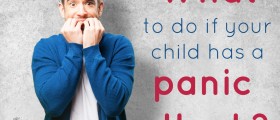
Panic Attack
A panic attack can be defined as an episode of rather intensive fear and anxiety. There are three types of panic attacks, unexpected, situational and situationally predisposed. In unexpected panic attack the fear and all the accompanying symptoms develop all of a sudden and without no evident reason. In situational panic attack a person will always experience fear if he/ she is in a situation which frightens them. And finally, in situational predisposed panic attack a person will sometimes have a panic attack in a specific situation. To be properly classified as a panic attack, an attack needs to contain at least 4 of the following symptoms:A feeling of forthcoming and direct danger or doomThe need to run awayRapid heart beatIncreased perspirationTrembling and/or shakingChest discomfortShortness of breathA feeling of chokingNausea and unpleasant feeling in the abdomenLightheadednessDepersonalizationA feeling of being out of controlIntensive fear of dyingTingling sensation or chills/ hot flushesPanic Disorder
One can be diagnosed to be suffering from panic disorder if he/she has experienced at least two unexpected panic attacks. They also have to experience constant worry related to the possibility of repeated attacks. The frequency of attack varies a lot and they have serious emotional and physical consequences on the person. Majority of people who are suffering from panic attack believe they are suffering from some serious underlying conditions and this is why they subject themselves to series of medical tests. Even if the tests are negative a person will still be persuaded that he/she is suffering from some other disease. These people may try to avoid panic attacks by changing certain behavioral patterns.
Agoraphobia
In many cases, agoraphobia matches with panic disorder. Agoraphobia can be defined as fear of experiencing a panic attack in a specific place form which a person can hardly escape and save him/herself. This fear becomes so intensive over years that people tend not to leave their homes at all just to prevent panic attacks. Some patients may also develop set routes such as the route from home to work and if they change this route for at least once they will suffer severe anxiety.
Though it might seem hopeless, both of these conditions are treatable. It really takes long time for patient to recover completely but the treatment is eventually successful. In agoraphobia some products and programs may be rather efficient in overcoming the problem. Furthermore, there are certain medications reserved for the people who cannot cope without additional help.

















Your thoughts on this
Loading...